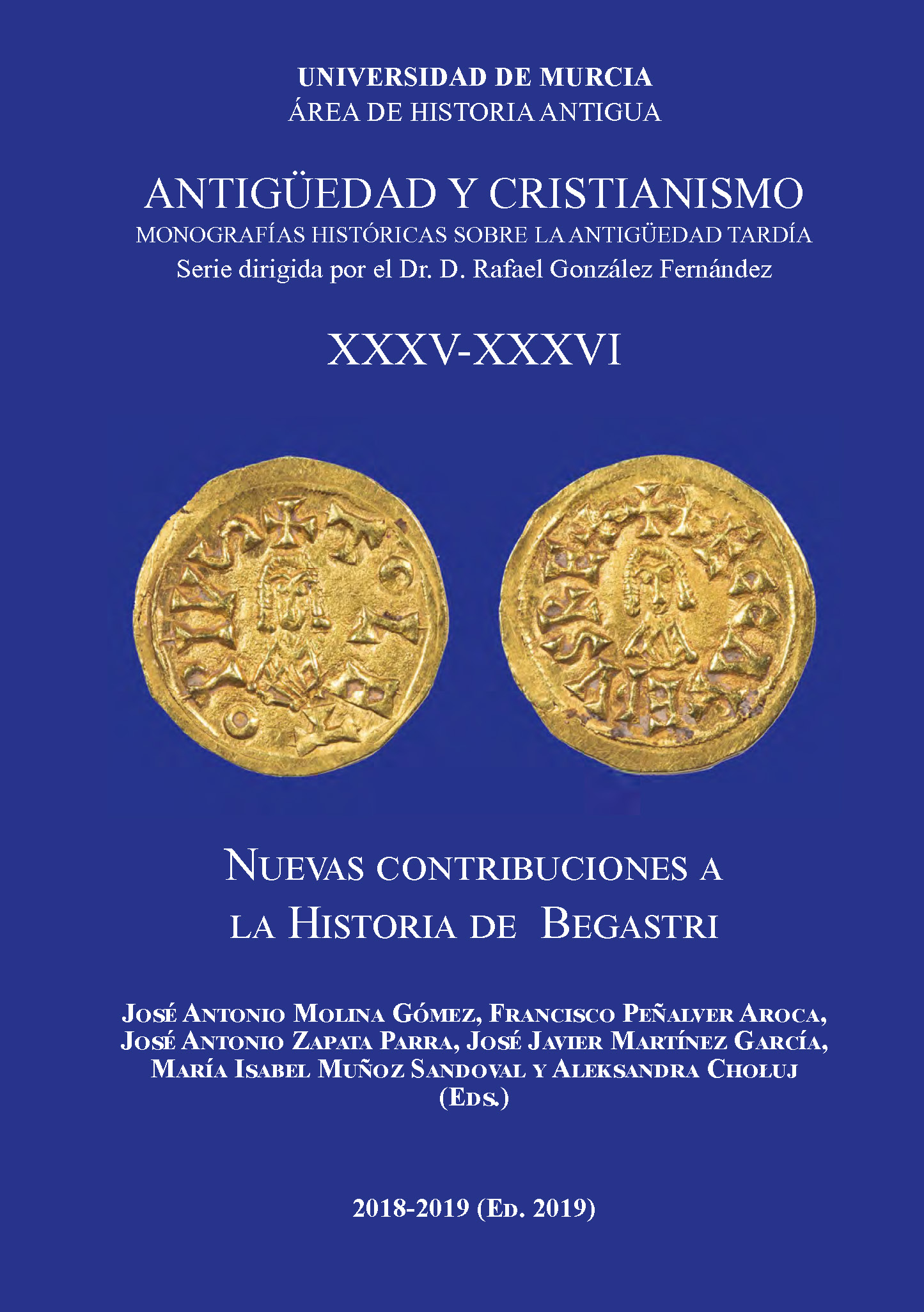The consolidations in Begastri
Abstract
The following article describes the last consolidation works carried out in the archaeological site of Begastri, after the last excavation campaigns on the place known as “Cabezo de Roenas”/ “Hill of Ruins”, located on the right bank of the Quípar River, in Cehegín. Being its powerful wall one of the most representative architectural elements of the archaeological site, it describes the last consolidation and rehabilitation works done on this place and others.
The wall, built with large blocks and abundant masonry, runs through the city’s acropolis, adapted to the natural hill terrain on which it rises to make it impregnable. The fortification is composed of large sections and wide passage areas, with some quadrangular towers that reinforce its defense, and nullify its weak points.
The Oriental Door, although discovered in 1983, has been completely excavated in the last intervention carried out in May 2009. Eventually works of consolidation and musealization have been done on it.
Downloads
References
Amante Sánchez, M. y Pérez Bonet, M. A.,V Campaña de excavación en el «Cabezo de Roenas» (Cehegín, Septiembre-octubre 1986), Memorias de Arqueología 1985-1986, 2, 1991, pp. 211-214.
Durán Blázquez, J.A., Peñalver Aroca, F., Zapata Parra, J.A. y Molina Gómez, J.A, La excavación y restauración de la puerta oriental de Begastri (2009-2010), Jornadas de patrimonio cultural de la Región de Murcia, XXII, 2011, pp. 109-118.
García Aguinaga, J.L. y Vallalta Martínez, P., «Fortificaciones y puerta de Begastri», Antigüedad y Cristianismo, I, 1994, pp. 101-108.
González Blanco, A., Begastri. Imagen y problemas de su historia, Antigüedad y Cristianismo, I, Murcia, 1984, 1994.
González Blanco, A., La cristianización de Begastri, Alquipir, nº 2, 1992 pp. 39-47.
González Blanco, A. y Molina Gómez, J.A., Historia de la excavación de Begastri, Alquipir, nº12, 2005, pp. 12-39.
Martín de Ambel y Bernal, Antigüedades de la villa de Cehegín, edición de José Moya Cuenca, Murcia 1995, p.297 s.
Martínez Sánchez, S. y Moya Cuenca, J., Aproximación al estudio de la estratigrafía de Begastri, Antigüedad y Cristianismo, VIII, 1991, pp. 543-550.
Molina Gómez, J.A. y Zapata Parra, J.A., Nuevas aportaciones al urbanismo tardío de Begastri: campaña de 2007-2008, Jornadas de Patrimonio Cultural. Intervenciones en el Patrimonio arquitectónico, arqueológico y etnográfico de la Región de Murcia, XIX, 2008, pp. 139-142.
Molina Gómez, J.A., Zapata Parra, J.A. y Peñalver Aroca, F., Las actuales excavaciones de Begastri (2007-2009). Perspectivas de futuro y avance de los nuevos descubrimientos sobre urbanismo y arte paleocristiano, Alquipir, nº 20, 2010, pp. 7-15.
Pierre, J.A., La construcción romana: materiales y técnicas, 2ª edición. Barcelona: Editorial de los oficios, 2002.
1. The authors non-exclusively assign the exploitation rights (reproduction, distribution, communication and transformation) to the magazine.
2. The works published in this magazine are subject to the Attribution-ShareAlike 4.0 International license (CC By SA 4.0). Therefore, they can be copied, used, disseminated, transmitted and publicly displayed, provided that:
i) the authorship and the original source of its publication (journal, editorial and URL of the work) are cited, thus allowing its recognition.
ii) it is allowed to remix, transform or create from the material while maintaining the same license as the original.
Note: Articles prior to 2022 incorrectly display the CC by SA license in the abstract page. They are under a CC by NC ND license as embedded in the article pdfs. Articles published in 2022 and after are under the CC by SA license.

3. Self-archiving conditions. Authors are allowed and encouraged to electronically disseminate the pre-print (version before being evaluated) and/or post-print (version evaluated and accepted for publication) versions of their works before publication, as it favors their publication. Earlier circulation and diffusion and with it a possible increase in its citation and reach among the academic community. Color RoMEO: verde.























